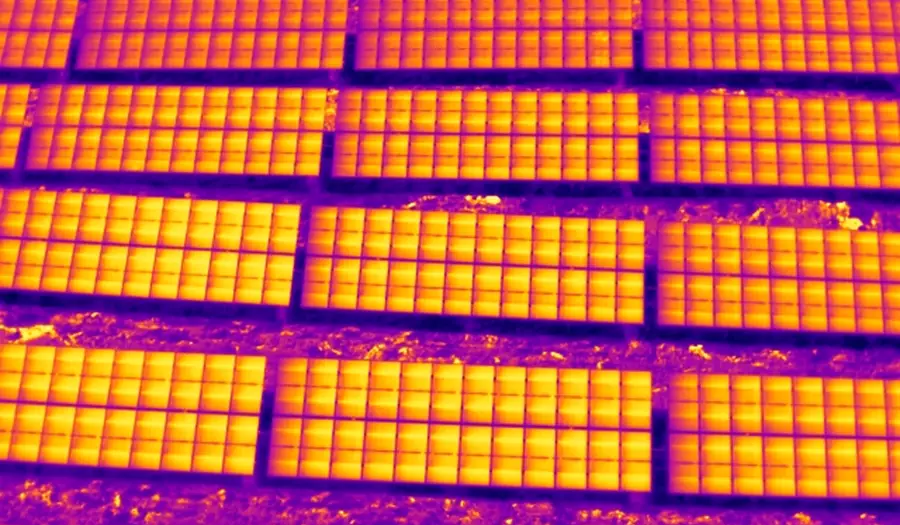Inverters: An inverter is one of the most important pieces of equipment in a solar energy system. It's a device that converts direct current (DC) electricity, which is what a solar panel generates from the sun’s photons to alternating current (AC) electricity, which the electrical grid uses. Think of it as an electricity translator. The energy output of each inverter is analyzed to confirm consistent operations and peak performance.
Trackers: Modules are mounted to rows of motorized trackers to maximize the amount of production that can be harvested from the sun even on cloudy days. They tilt towards the east in the morning and move with the sun throughout the day, resetting each night. Our sites are built with automatic safety features to withstand high winds (120+ miles/hour in keeping with American National Standards Institute (ANSI) rating) and will go into stow mode, the most stable position the panels can assume to withstand wind loads. Snow can also be an issue in some northern states. Heavy snow can damage the array and prevent it from producing power. Trackers can be issued commands remotely to rock back and forth dumping the snow off the panels, an action called “snow shedding.”


Aerial Imagery: Utilizing drones equipped with specialized onboard thermal imaging cameras, infrared scans give us an eye in the sky to measure the heat radiating from the panels. The photos can help identify hot spots, and defective, or underperforming modules in less time and with more precision than a human technician.
Weather: Weather is perhaps the most important (and unpredictable) factor that is closely monitored. Each solar farm is equipped with a weather station. Data from the plane of array (POA) sensor, which measures the available sunlight, is overlayed with the production output to ensure both systems are in alignment. An efficient solar farm will have the same peaks in sunlight as peaks in power produced. Unusual storm patterns are also watched to protect the site and the safety of the surroundings. In addition to tracking available sunlight, our plants are equipped with sensors that track wind speed, temperature, air, and modules. All these contributing environmental factors affect the output of power and the performance of our assets.


Cameras: On-site cameras give us remote eyes on the ground. Not only can we see that the equipment is functioning properly, but the cameras alert us of anyone arriving on site. Seeing wildlife graze the fields is a bonus!


Utility Outages: Sometimes the power from the utility company goes out. In the event of an outage, we dispatch technicians or perform a remote reset to protect the system and resume producing power safely and quickly.
Preventative Maintenance: As the owner of 100 solar farms across 10 states (and more on the way!), it is our job to make sure everything is kept in tip-top shape. In addition to monitoring and reactive maintenance, each solar farm receives thorough, regularly scheduled maintenance twice a year to ensure the power system is functioning safely and efficiently. We take pride in our land stewardship. All our leased properties are planted with vegetation mixes of native grasses, which are meticulously well-maintained by partnering with local contractors and sheep herds. All of this helps us harvest as much energy as the sun can produce.
Are you ready for maintenance-free solar?
By joining a Community Solar project, you've chosen an easy way to support renewable energy, create local power projects that increase regional grid resiliency and reduce emissions. And you don't have to maintain or optimize your own residential panels yourself or pay someone to do it for you. Getting started is simple and you will save money on your electric bills with no upfront cost. All that is needed is five minutes and a utility account. To learn more about how you can go green and keep your green with community solar, go to NautilusSolar.com.


.png)

.png)





